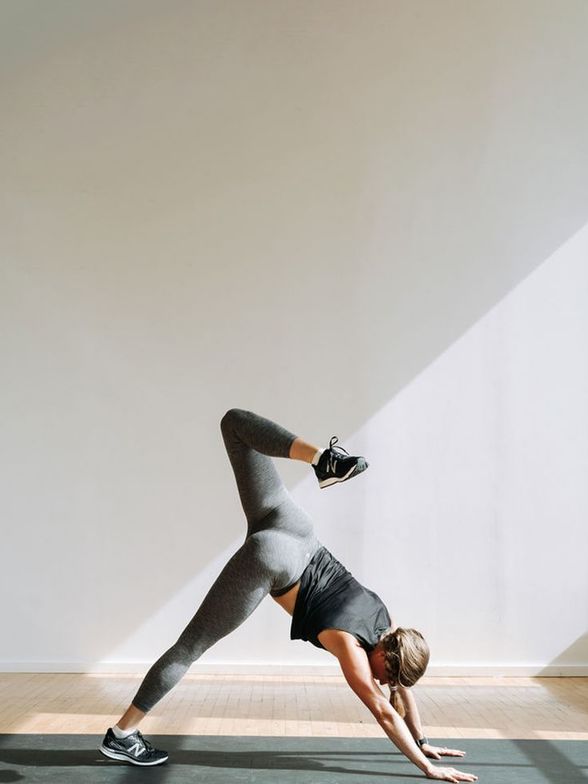
Why Do Your Hips Click? Understanding the Causes and Solutions
Have you ever noticed a clicking or popping sound in your hips when walking, stretching, or exercising? While it might seem concerning, hip clicking is usually harmless. However, in some cases, it can indicate an underlying issue that requires attention. Let’s explore why your hips make these noises and what you can do about it.
Common Causes of Hip Clicking
-
Snapping Hip Syndrome (Coxa Saltans)
One of the most common causes of hip clicking is Snapping Hip Syndrome, which occurs when a tendon or muscle slides over a bony prominence in the hip. This condition is categorized into three types:-
External Snapping Hip: The iliotibial (IT) band or gluteus maximus tendon moves over the greater trochanter (outer hip bone), creating an audible snap.
-
Internal Snapping Hip: The iliopsoas tendon (hip flexor) moves over the pelvic bone, producing a deeper clicking sensation.
-
Intra-articular Snapping Hip: Caused by an issue within the hip joint, such as a labral tear or loose cartilage.
-
-
Hip Labral Tears
The labrum is a ring of cartilage that cushions and stabilizes the hip joint. A tear in this structure can cause clicking, locking, or pain, especially with certain movements. Studies suggest that labral tears are a common source of hip pain, particularly in athletes (Kalisvaart & Safran, 2015). -
Tight or Overused Muscles
Muscles and tendons surrounding the hip joint can become tight from repetitive motion or poor biomechanics, leading to clicking sounds as they rub against bone. This is common in runners, dancers, and individuals who sit for long periods. -
Hip Impingement (FAI – Femoroacetabular Impingement)
This occurs when abnormal bone growth in the hip joint leads to friction and limited mobility. It can cause clicking, stiffness, and discomfort, especially during hip flexion and rotation (Nepple et al., 2011). -
Gas Release in the Joint
Similar to the cracking of knuckles, gas bubbles within the synovial fluid of the hip joint can sometimes pop, producing a clicking noise. This is generally harmless and not associated with pain.
When to Be Concerned
While hip clicking is often benign, it may indicate a problem if accompanied by:
-
Pain or discomfort
-
Stiffness or limited range of motion
-
Swelling or inflammation
-
Instability in the hip joint
If you experience persistent symptoms, it’s best to consult a healthcare professional for an evaluation.
How to Address Hip Clicking
-
Stretching and Strengthening
-
Focus on hip flexors, IT band, and glute muscles to improve flexibility and balance.
-
Strengthening the core and hip stabilizers can reduce excess movement in the joint.
-
-
Manual Therapy and Chiropractic Care
-
Chiropractic adjustments, soft tissue therapy, and targeted exercises can help restore proper movement and function in the hip joint.
-
-
Foam Rolling and Myofascial Release
-
Regular foam rolling of the IT band and hip flexors can reduce tightness and minimize snapping sensations.
-
-
Modify Activities
-
Avoid repetitive movements that exacerbate clicking and focus on proper form during exercise.
-
-
Medical Evaluation for Persistent Symptoms
-
If clicking is accompanied by pain or functional limitations, a professional assessment (including imaging if necessary) can help determine if a labral tear or impingement is present.
-
Final Thoughts
Hip clicking is often a normal occurrence, but if it becomes painful or restrictive, seeking professional guidance is key. At Modern Chiropractic, we specialize in diagnosing and treating musculoskeletal conditions, including hip-related issues. If you're experiencing discomfort or persistent hip noises, schedule an appointment with us at 503-635-6005 or visit us at 16679 Boones Ferry Rd. STE 105, Lake Oswego, OR.
References:
-
Kalisvaart, M. M., & Safran, M. R. (2015). Hip labral repair: Indications and outcomes. Sports Medicine and Arthroscopy Review, 23(4), 190-194.
-
Nepple, J. J., Philippon, M. J., & Stubbs, A. J. (2011). Impingement and hip injuries in the young athlete. Clinical Sports Medicine, 30(2), 291-318.



